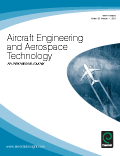 An article about the application of RBF Morph for the improvement of the aerodynamic performance of an industrial glider having title “Glider fuselage-wing junction optimization using CFD and RBF mesh morphing” has been published on the journal “Aircraft Engineering and Aerospace Technology” Volume 88 Issue 6.
An article about the application of RBF Morph for the improvement of the aerodynamic performance of an industrial glider having title “Glider fuselage-wing junction optimization using CFD and RBF mesh morphing” has been published on the journal “Aircraft Engineering and Aerospace Technology” Volume 88 Issue 6.
Available online at http://www.emeraldinsight.com/doi/abs/10.1108/AEAT-12-2014-0211
Authors: M. E. Biancolini, E. Costa, U. Cella, C. Groth, G. Veble, M. Andrejašič
Abstract:
The present paper aims to address the description of a numerical optimization procedure, based on mesh morphing, and its application for the improvement of the aerodynamic performance of an industrial glider which suffers of a large separation occurring in the wing–fuselage junction region at high incidence angles. Shape variations were applied to the baseline configuration through a mesh morphing technique founded on the mathematical framework of radial basis functions (RBF). The aerodynamic solutions were obtained coupling an RANS code with the mesh morphing tool RBF Morph™. Two shape modifiers were set up to generate a parametric numerical model. An optimization procedure, based on a design of experiment sampling, was set up implementing the fully automated workflow within a high performance computing (HPC) environment. The optimal candidates maximizing the aerodynamic efficiency were identified by means of a cubic RBF response surface approach.
The separation was significantly reduced, modifying the local geometry of fuselage and fairing and maintaining the wing aerofoil unchanged. A relevant aerodynamic efficiency improvement was finally gained.
The developed procedure proved to be a very powerful and efficient tool in facing aerodynamic design problems. However, it might be computationally very expensive if a large number of design variables are adopted and, in those cases, the method can be suitably used only within the HPC environment.
Such an optimization study is part of an explorative set of analyses that focused on better addressing the numerical strategies to be used in the development of the EU FP7 Project RBF4AERO.
